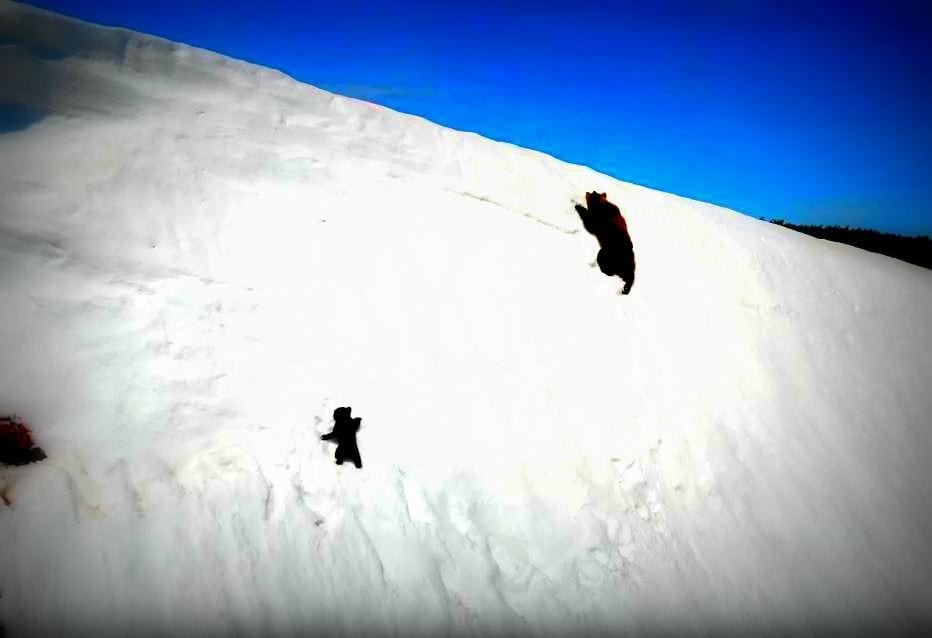
News
Drones as a New Source of Disturbance for Wildlife
The use of unmanned aircraft systems (UAS), also known as drones, for professional as well as personal has increased immensely over the past few years. Currently, UAS systems operate at low altitudes and in any terrain which is why they are susceptible to interact with the local fauna and generate a new type of anthropogenic disturbance that hasn’t been yet evaluated in detail.
The Development of UAS and the Wildlife Reactions
A new paper submitted by a group of authors at the Department of Evolutionary Ecology at the technical university in Sevilla, Spain is aiming at reviewing the development in the field of Unmanned Aircraft Systems and their future technological advances.
As the introduction of the paper reads:
“Small UAS can provide high spatial and temporal resolution data, which has favored their incorporation to environmental biology in different research and management topics, such as plant and animal ecology, wildlife monitoring, anti-poaching and infrastructures impact assessment. There is also a recent increase of operators using UAS to scare off wild birds that cause economic losses in agricultural areas and fisheries, pose risks in airports, damage monuments and interfere in waste management.”
Due to the expansion of the use of UAS (which have previously been used only for military purposes), the group of authors decided to entail in an experiment that focuses on their broad scientific base – to mainly identify the factors influencing the probability and magnitude of wildlife reactions to UAS.
The authors performed a comprehensive literature search in which they gathered information from scientific articles, dissertations and reports that mention the use of small UAS in animal monitoring and ecology-related topics.
Examining the Correlation Between UAS and Wildlife and Monitoring the Animals’ Reaction
Their main aim was to find the correlation between UAS and wildlife- specifically to examine the reaction of animals to UAS and record the characteristics of the flight, aircraft or the animals concerned which could be influencing animal responses.
“In order to standarize the animal behaviors described in the different studies, we classified the reaction caused by the UAS into the following categories: “none” (i.e. study mentioned no noticeable behavioral change), “alert reaction” (i.e. at least one individual showed increased attention or alert towards the UAS during the study), or “active reaction” (i.e. at least one individual responded actively towards the UAS, either fleeing or attacking),” the authors note in the paper.
Through statistical analysis, materials and methods, the authors focused on numerous cases which show active responses and used mixed models to examine the distance of UAS and the animals’ reaction.
The results were as following.
“Overall, we were able to include in the analyses data from 36 published studies and from 17 unpublished field campaigns that reported information about wildlife reactions towards UAS flights. The first-step analyses (i.e. pooled data) showed that the probability of UAS producing a reaction on wildlife was higher in studies conducting “target-oriented” than “lawn-mower” flight patterns (standard significance levels were not reached but the 90% CrI did not include zero.”
According to the findings, they all support the hypothesis that animal reactions to UAS are conditioned by factors that are related to both UAS attributes and operation modes – as well as the characteristics of the concerned animals.
Finding the Effects on Wildlife Responses and Coming to a Conclusion
As they found, the flight pattern of an UAV has an important effect on the wildlife responses. This is why target oriented flights approach them at shorter AGL and distances, mainly for nest inspections, “animal control” as well as photography. As the authors found, these approaches produce more reactions than the other flying patterns – leading to higher disturbance.
The engines which are generally noisier than electric ones, produce more animal reactions which would agree with previous research which showed that the importance of noise is a source of disturbance for wildlife.
To sum things up, the authors have classified UAS systems as a “potential new source of anthropogenic disturbance, and the extent to which they elicit wildlife reactions depends on UAS and animal related factors.” They also found that the use of UAS should be only limited to projects where flights are justified and adopting a set of specific guidelines (made in the S3 Text section of their study).“1) Use reliable UAS operated by experienced pilots; 2) Favor low-noise or small UAS against noisier or larger ones; 3) Mount the ground control station 100–300 m away from the study area; 4) Conduct missions as short as possible; 5) Fly at the highest altitude possible; 6) Avoid maneuvers above the animals; 7) Favor lawn-mower flight patterns; 8) Minimize flights over sensitive species or during breeding period; 9) Avoid UAS silhouettes that resemble predator shapes; 10) Avoid close-distance direct approaches and favor indirect ones; 11) Monitor target animals before, during, and after the flight; 12) For nest inspections, fly at times in which eggs/chicks are out of risk; 13) If the flights are around aggressive raptor’s territories, perform them at day times when the temperature is low and birds are less prone to fly,” are the recommendations specified by the authors.
Citation: “Unmanned aircraft systems as a new source of disturbance for wildlife: A systematic review.”, Mulero-Pázmány, M, Jenni-Eiermann, S, Strebel, N, Sattler, T, Negro, JJ and Tablado, Z (2017) Unmanned aircraft systems as a new source of disturbance for wildlife: A systematic review. PLoS One, 12 (6). ISSN 1932-6203 – http://researchonline.ljmu.ac.uk/9379/
Related story: Fallen Bear Cub Drone Video Demonstrates How Drones Can Negatively Impact Animals


















